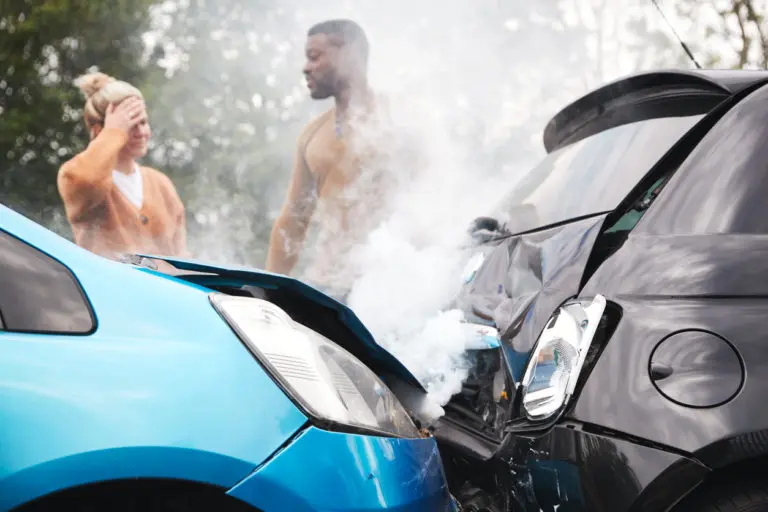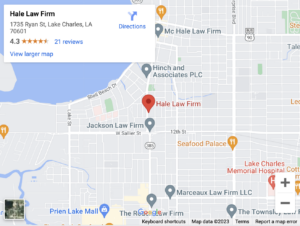Taylor Hale | May 14, 2024 | Car Accidents
Rear-End Collision Injuries and How You Can Recover Compensation

Rear-end collisions are the most common type of car accident, according to the National Highway Traffic Safety Administration (NHTSA). More than 32% of crashes are rear-end collisions. Being involved in a rear-end collision is a jarring experience that can have lasting effects on your health and well-being. Grappling with the aftermath of your crash and a potentially long road to recovery can be overwhelming.
If you have been injured in a rear-end crash, you have the right to seek full compensation from the at-fault party. An experienced car accident lawyer can help you recover financially from your accident while you focus on your physical recovery. Here is what you should know about rear-end collision recovery.
The Spectrum of Injuries in Rear-End Crashes
Rear-end collisions can cause a range of injuries, many of which are related to the unique mechanics and physics of how these accidents occur. These injuries range from mild to serious, and many are not apparent immediately after the crash.
Whiplash: The Hallmark Injury of Rear-End Impacts
Whiplash is nearly synonymous with rear-end collision; these crashes cause more whiplash injuries than any other type of collision. When one car rear-ends another, the stationary vehicle moves forward suddenly. The surprised occupants experience a forceful backward snap of the head, followed by a violent forward thrust. This unnatural movement strains neck muscles and ligaments, causing whiplash.
Whiplash is often unnoticed at first amid the adrenaline and shock of the crash.
Other Common Rear-End Collision Injuries
A rear-end crash can cause many other types of injuries besides whiplash. You may suffer injuries such as:
- Seatbelt injuries. This may include organ damage, chest trauma, lap and shoulder injuries, and fractures. Collectively, these injuries are called “seatbelt syndrome.”
- Airbag injuries. Eye injuries, respiratory complications, lung injuries, and thermal, friction, or chemical burns can all be caused by airbag deployment and alkaline gas exposure.
- Back injuries. This includes herniated discs and muscle or ligament strains and sprains.
- Traumatic brain injuries. Concussions and other types of brain injuries are common injuries in car accidents.
- Fractures. Common bones broken in a rear-end crash include vertebrae, ribs, collarbone, sternum, skull, and facial bones like the orbital bones, nose, and cheekbones.
- Joint injuries. The force of a crash can cause ligaments in joints to tear or rupture. Crashes can also cause dislocations.
- Facial trauma. A rear-end crash can cause injuries to the face from an airbag or striking a dashboard or steering wheel. Injuries like bruising, lacerations, burns, and fractures can be disfiguring.
- Soft tissue injuries. This includes abrasions, lacerations, bruises, sprains, and strains.
A common misconception is a car accident without noticeable property damage is unlikely to cause injury. In fact, whiplash injuries can occur at speeds as low as 5-10 mph. Older adults, children, and people with pre-existing conditions are at an increased risk of suffering more serious injuries in low-speed crashes.
How To Recover Compensation for Your Rear-End Collision Injuries
Securing compensation for your injuries is more than financial restitution—it ensures you have the resources to get treatment, heal, and overcome the consequences of another’s negligence.
If your accident was caused by someone else’s negligence, you are entitled to seek compensation for the financial losses of the crash. This includes future medical costs and out-of-pocket expenses. You are also entitled to money for the pain and suffering, anguish, distress, and scarring you have experienced.
To recover fair compensation, you will need to prove the other party caused the accident and your injuries.
Seek Medical Attention Right Away
As soon as possible, make sure you seek medical care, even if you feel fine after the accident. Even a minor crash can cause injuries, but they may not be apparent for hours or days.
Prompt medical attention is important to diagnose any injuries you may have and get the care you need. It’s also critical to establish that your injuries were caused by your accident. Delayed treatment may be used by an insurance company to devalue your claim.
Proving Negligence
To recover compensation from the responsible party, you will need to prove they were negligent. There are four basic elements of negligence:
- The other party owed you a duty of care. All motorists owe a duty to others to drive with reasonable care and follow traffic laws.
- This duty was breached. This means the other driver failed to exercise caution or drive in a reasonably safe manner.
- You suffered an injury.
- The breach of duty caused your injury.
In most cases, the driver of the trailing vehicle is at fault for a rear-end collision. Drivers have a duty to maintain a safe following distance and avoid distraction.
Proving negligence is harder than it may seem, but a legal concept called negligence per se can help. When a defendant violates a safety statute without a valid excuse and causes the type of harm the law was designed to prevent, they are automatically presumed negligent. Speeding or driving under the influence, for example, are considered inherently negligent behaviors.
Proving Causation
Causation is a critical element of negligence. Even when negligence per se applies, you must show the defendant’s behavior caused the accident and your injuries. To prove causation, you must show the dependent’s behavior was the actual or proximate cause of your injuries.
- Actual cause or cause in fact – But for the defendant’s behavior, your injury would not have occurred.
- Proximate cause or legal cause – The defendant’s behavior was a substantial factor in causing the accident, which was a reasonably foreseeable result.
The actual cause is the direct, immediate cause of the crash. The proximate cause is the underlying cause of the crash or the incident that set the entire accident in motion. The actual and proximate cause may or may not be the same.
Louisiana law requires that you submit medical evidence to establish a reasonable causal connection between the crash and your injury. That means evidence that the injury was more likely than not caused by the accident.
You Have a Limited Amount of Time To Recover Compensation
If you have been injured in a rear-end collision, it’s important to take action as soon as possible. The Louisiana statute of limitations is just one year from the date of the injury. If you miss this window, you will be legally barred from recovering money from the responsible party.
Recovering from an accident can be challenging and time-consuming. The physical and mental toll alone can be a major hurdle to overcome, but it’s even harder if your accident caused a financial burden.
An experienced personal injury lawyer can help you pursue a financial recovery from the at-fault driver to get the medical care and peace of mind you need as you heal.
Contact our Lake Charles Personal Inury Attorneys At Hale Injury Lawyers For a Free Consultation
For more information, please contact an experienced personal injury attorney at Hale Injury Lawyers at (337) 888-4253 & schedule a free initial consultation today. We will listen to your story and help you explore your legal options and the path forward.
Hale Injury Lawyers
1735 Ryan St
Lake Charles, LA 70601
(337) 888-4253

